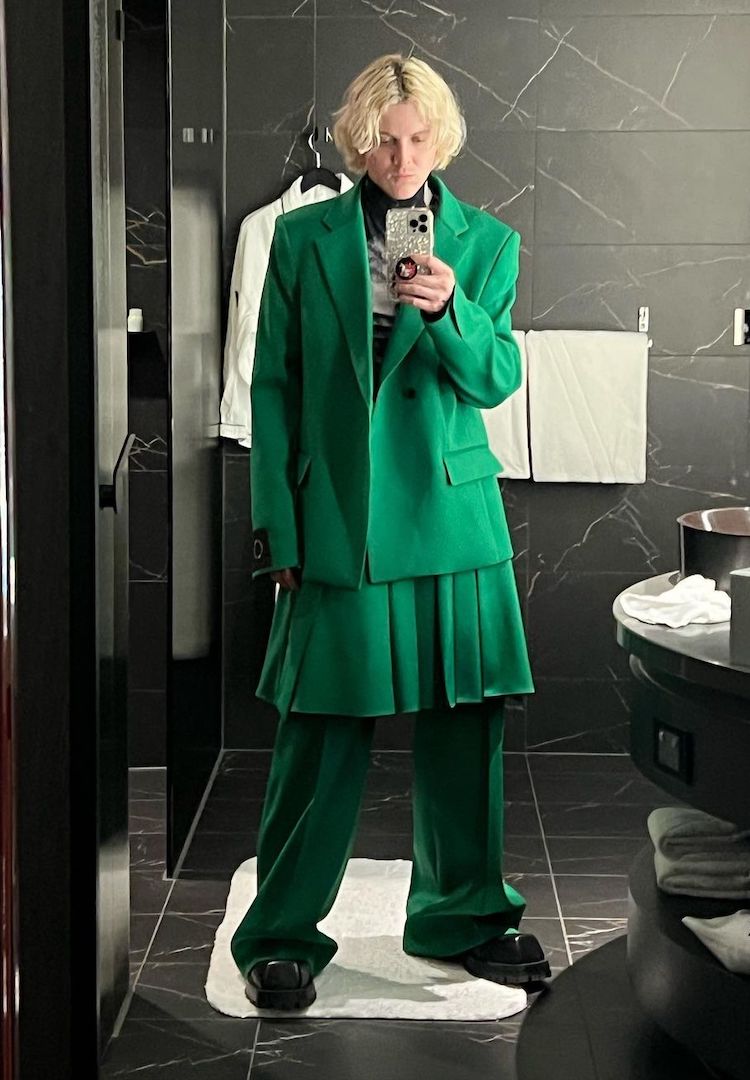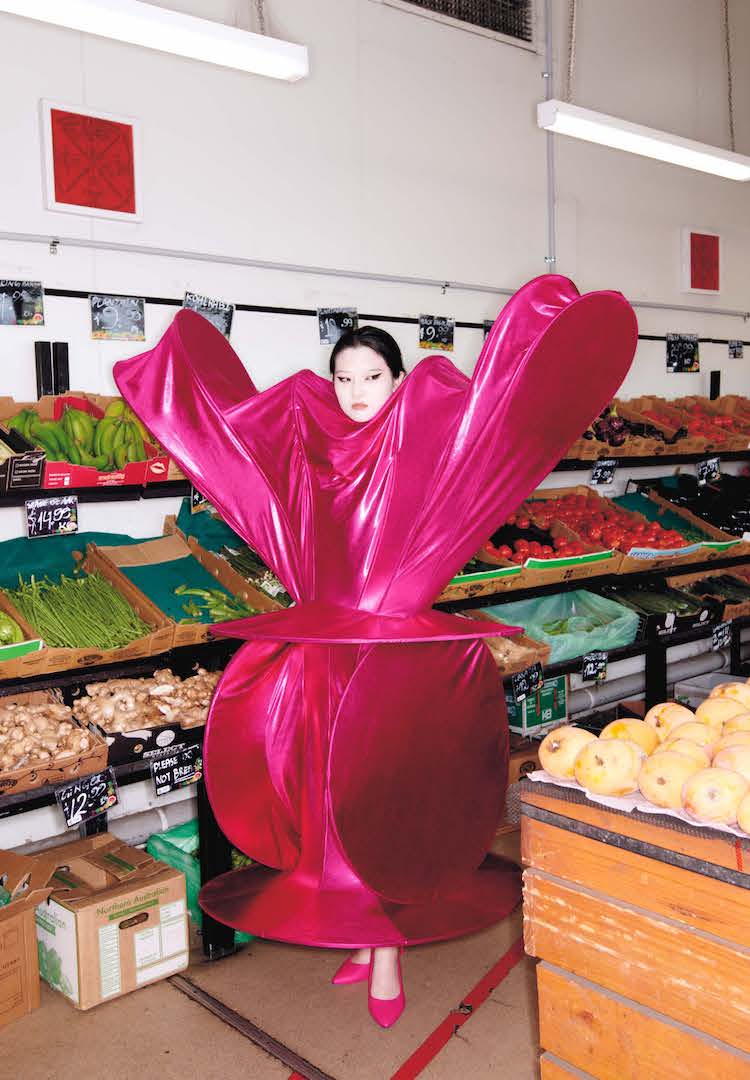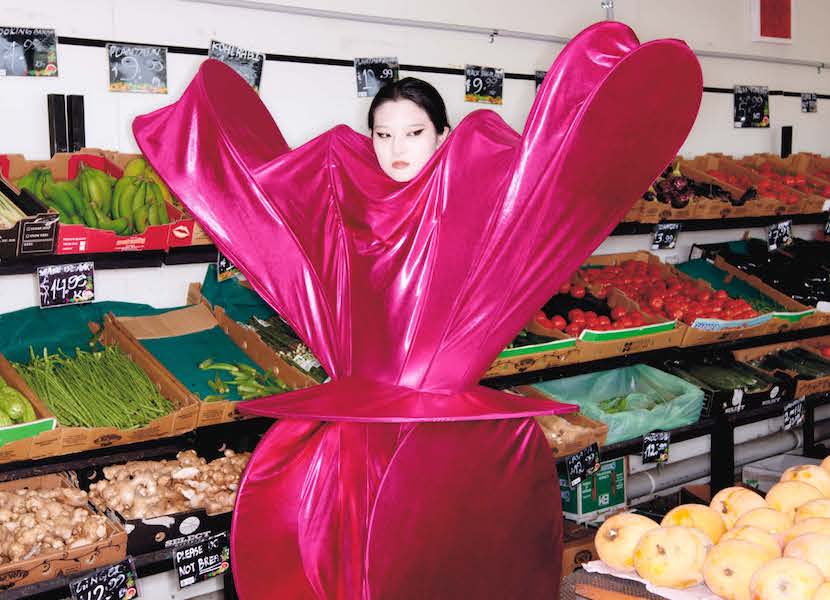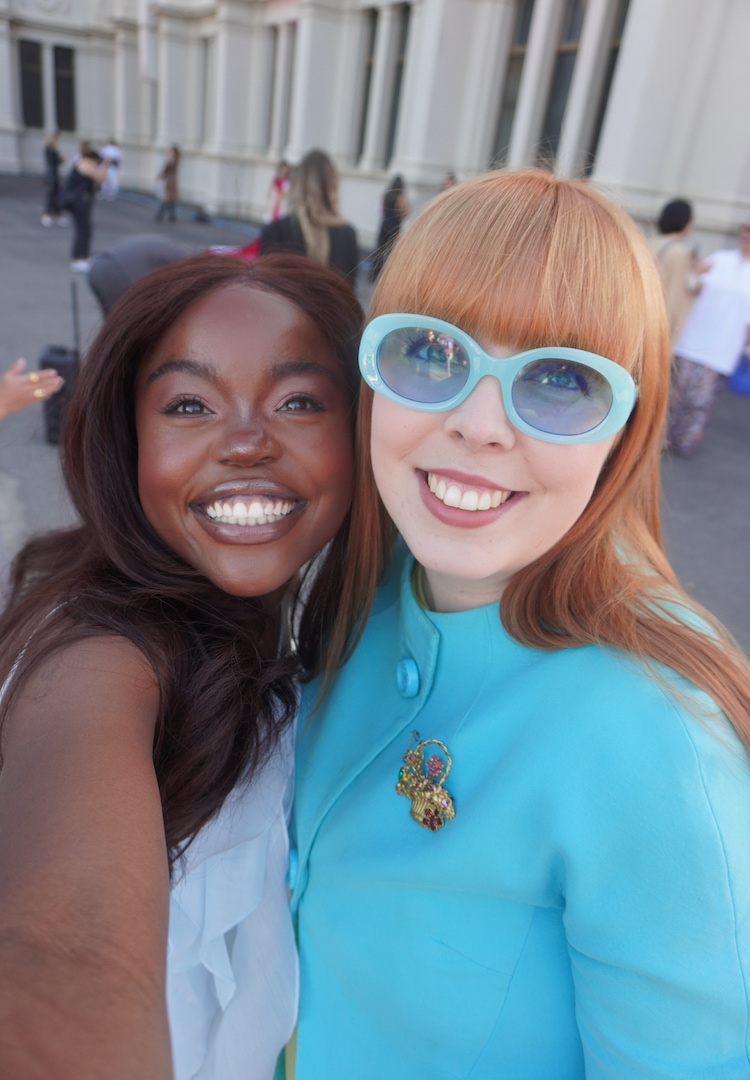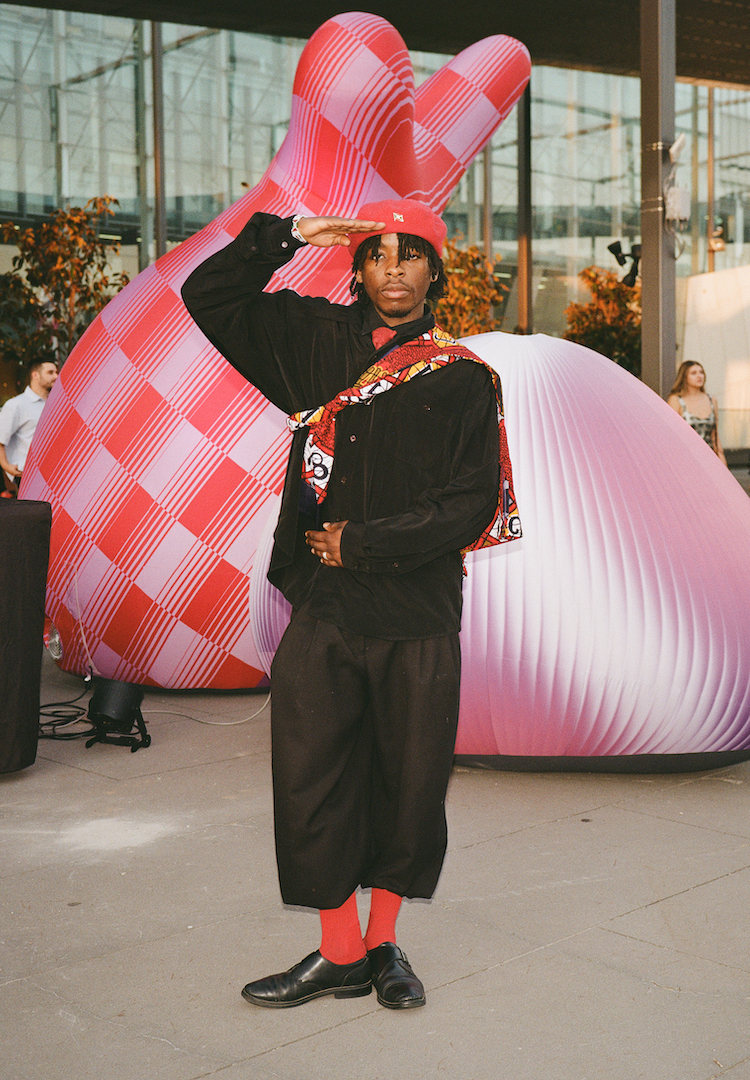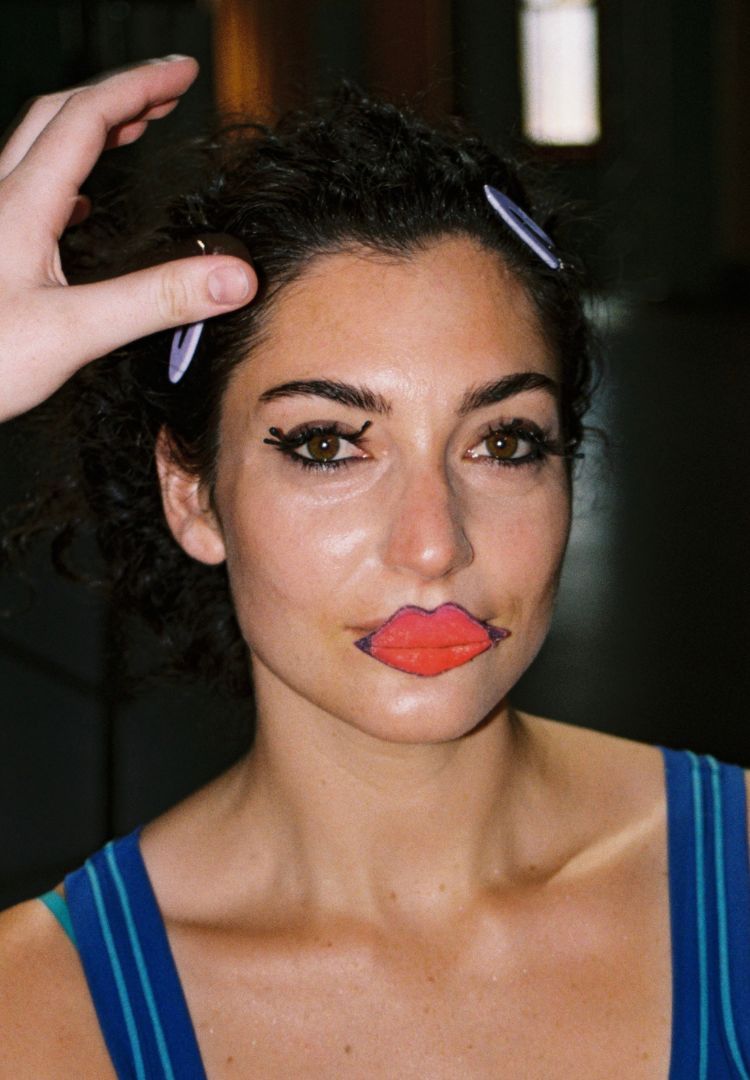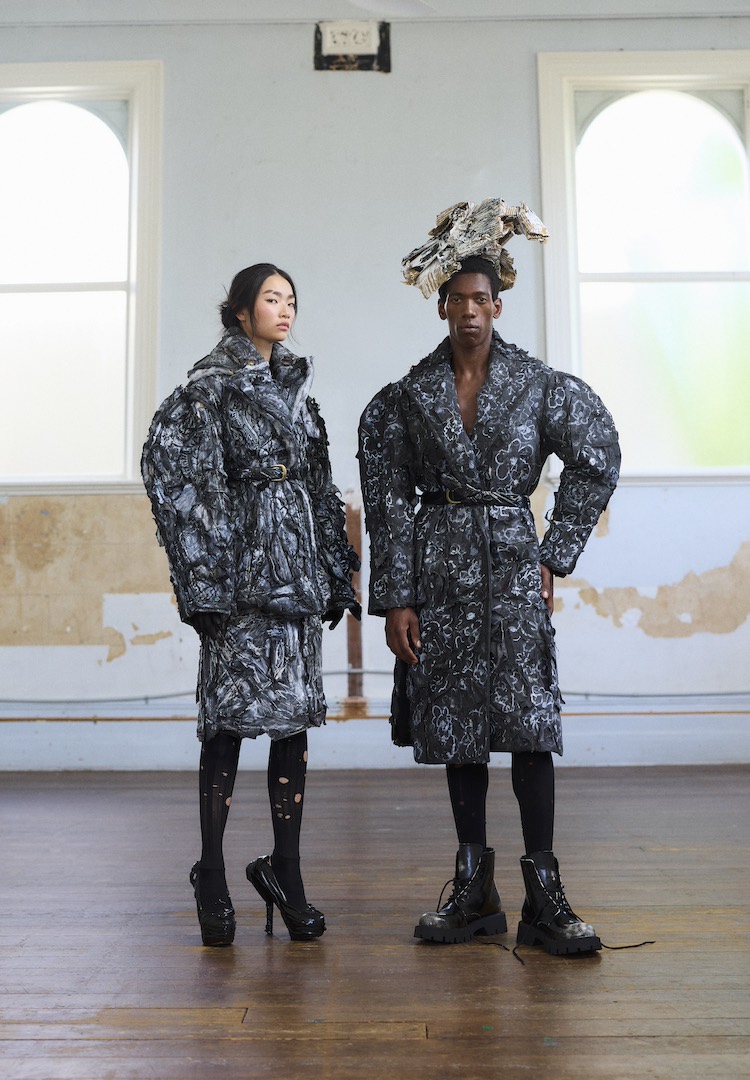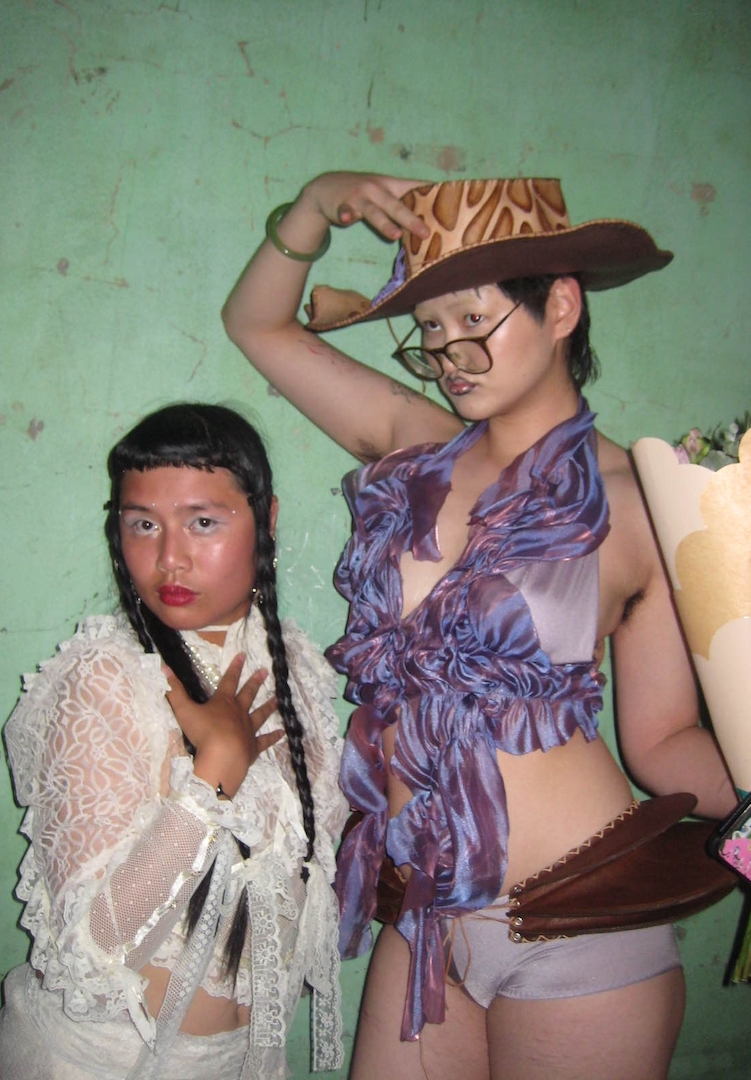Yiwei Ju’s larger-than-life graduate collection sits between reality and the virtual world
PHOTOGRAPHY BY TED MIN
WORDS BY IZZY WIGHT
“This technique-based collection focuses on silhouette and space.”
With a focus on finding the intersection between reality and the virtual world, RMIT fashion graduate Yiwei Ju creates clothing with sculptural, innovative silhouettes. Featuring tentacles, spiral boning and skirts that could double as (very chic) flotation devices, Yiwei’s collection, Portable Space, is truly otherworldly. Below, Yiwei shares how she brought the collection to life.
Looking for more fashion news and features? Head to our Fashion section.
As an official media partner of Paypal Melbourne Fashion Festival, Fashion Journal is excited to once again be supporting the National Graduate Showcase, celebrating Australia’s top-ranked emerging fashion design talent. The top 10 leading graduates from across the country will exhibit their collections in a boundary-pushing presentation, showcasing experimental design and innovation. Over the next few weeks, we’ll be profiling each designer through a series of interviews. Next up is Ada Fong.
Please introduce yourself to our readers.
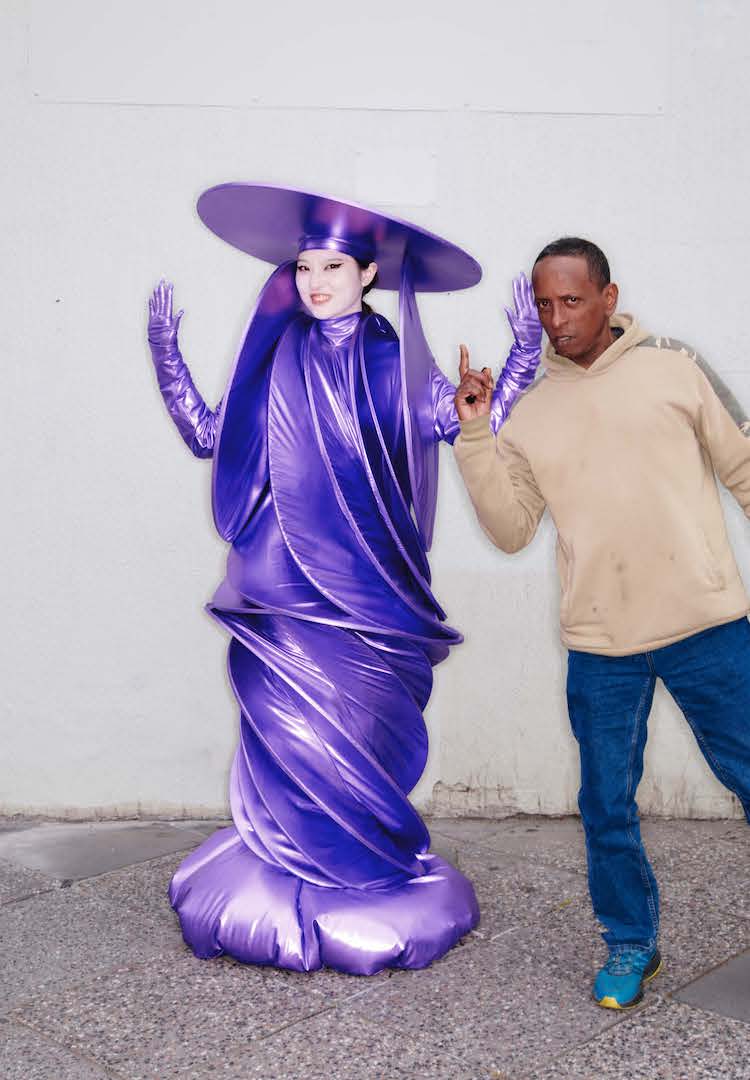
I’m a fashion practitioner who has recently graduated from RMIT with a Bachelor of Fashion (Honors). I see fashion as a medium that communicates body, dress, experience and space. My practice has been focusing on finding the intersection between reality and the virtual world, with an aim of creating clothing with bold and innovative silhouettes that provide a different and interesting experience for the wearer and the audience.
Tell us about your collection.
This technique-based collection focuses on silhouette and space, which are conceptualised through 3D rendering software and post-production software, and then formed through [the] body’s interaction with dress. The whole idea of this collection came from my interest in clothing [as] architectural forms.
When such unconventional clothing appears in everyday scenes. everything becomes extremely interesting, especially when [a] person or object starts to interact with the wearer. Therefore, one of the main purposes of this collection is to provide the wearer and the audience with a different kind of fashion experience.
When did you know you wanted to get into fashion and textile design?

Since I was a child, I have wanted to be a fashion designer. I thought this was a really cool job, even though I had no idea what a fashion designer did at the time…
What were the major points of inspiration for your collection, and you more broadly as a designer?
I didn’t have a particular inspiration for this collection, I think I prefer to find ideas in the process of experimentation… I find it more interesting to actually make something and keep developing it.
Tell us about the experience of putting together your graduate collection.

At first, I just made some rough prototypes with structural materials based on my personal interest in exaggerated and playful silhouettes. I then chose one… that I liked the best for further development. In this process, I edited the photo of the chosen prototype into a distorted and twisted shape using post-production software.
In the meantime, I created a couple of 3D models similar to the silhouette of the post-produced photo in Cinema 4D. I then imported these 3D models into the patternmaking software Clo to convert them into 2D patterns and tried to turn them into a wearable collection. When I tried to translate the 3D garments into physical garments, I spent a lot of time sourcing materials and eventually found using a combination of boning and stretchy fabrics would create this kind of layered-yet-unusual silhouette.
What part does sustainability play in your design practice? And other ethical considerations?
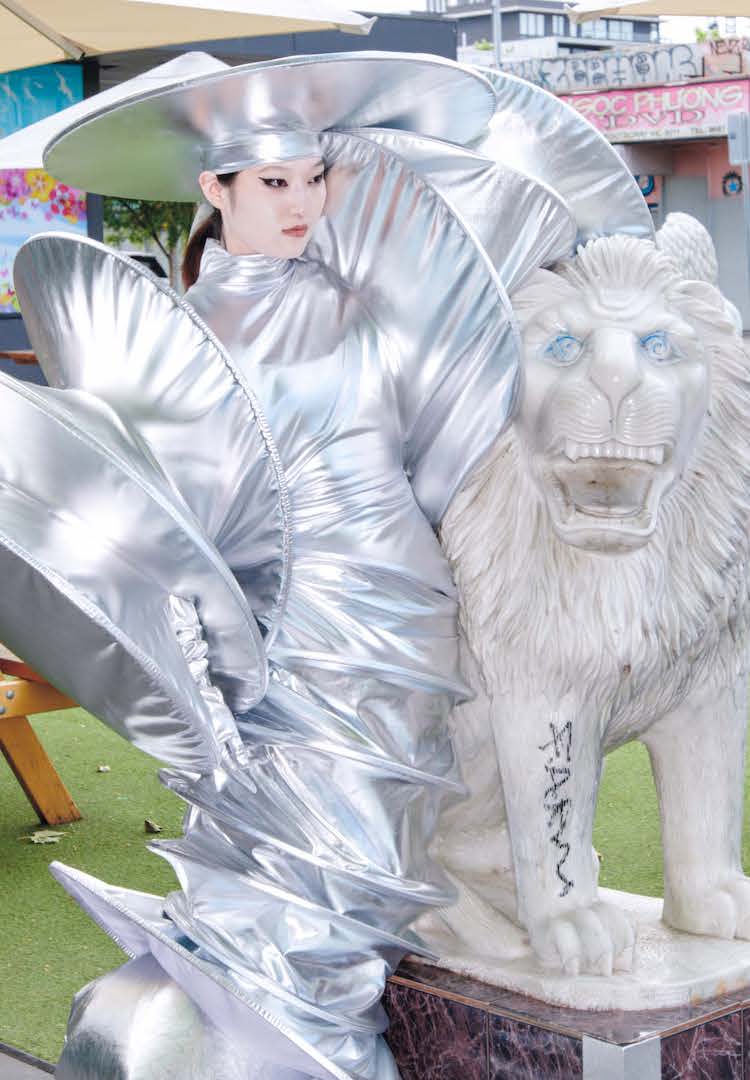
I have made this collection with as few toiles as possible so I can reduce fabric waste. In order to do so, I chose to use Clo to do patternmaking. On Clo, you can see how the garment will look on the body… you don’t have to make the toiles out of fabric as long as the measurement is accurate. In terms of other ethical considerations, I have always managed to avoid fur and leather in my work, I would use faux fur or pleather instead.
Who do you think is most exciting in Australian fashion right now?
I believe that after COVID, people’s enthusiasm for creativity will gradually reach a peak and more new blood will be brought into the Australian fashion industry.
What about the Australian fashion industry needs to change?

We need more opportunities for graduates and less experienced designers to showcase their work and more job opportunities for these people.
Dream Australian collaborators?
I really wish I could potentially work with Jordan Dalah, his work has inspired me a lot. I was very obsessed with how he played with the volumes and structure of clothing, seeing the playful and dramatic silhouettes of his collection appear on the runway is like entering a whole new world that only belongs to him.
How did architecture inspire your designs?
What inspired me more than the structure and appearance of the building was the general concept of architecture. Clothing is commonly seen as the second skin of the body, and the architecture where the body situates is the third skin. The architectural space is a space for the body to move around, while clothing is a space that the wearer carries with them.

This collection aims to use the interaction between the body and the dress to create a space that can potentially interact with the surroundings. Staying in a space is to assimilate the space to a body, so the clothed body then becomes an architectural element in the process of creating the space. Basically, this was how I came up with the whole idea of this collection.
Some of Yiwei’s responses have been edited for clarity. To view more of the designer’s work, head here.

